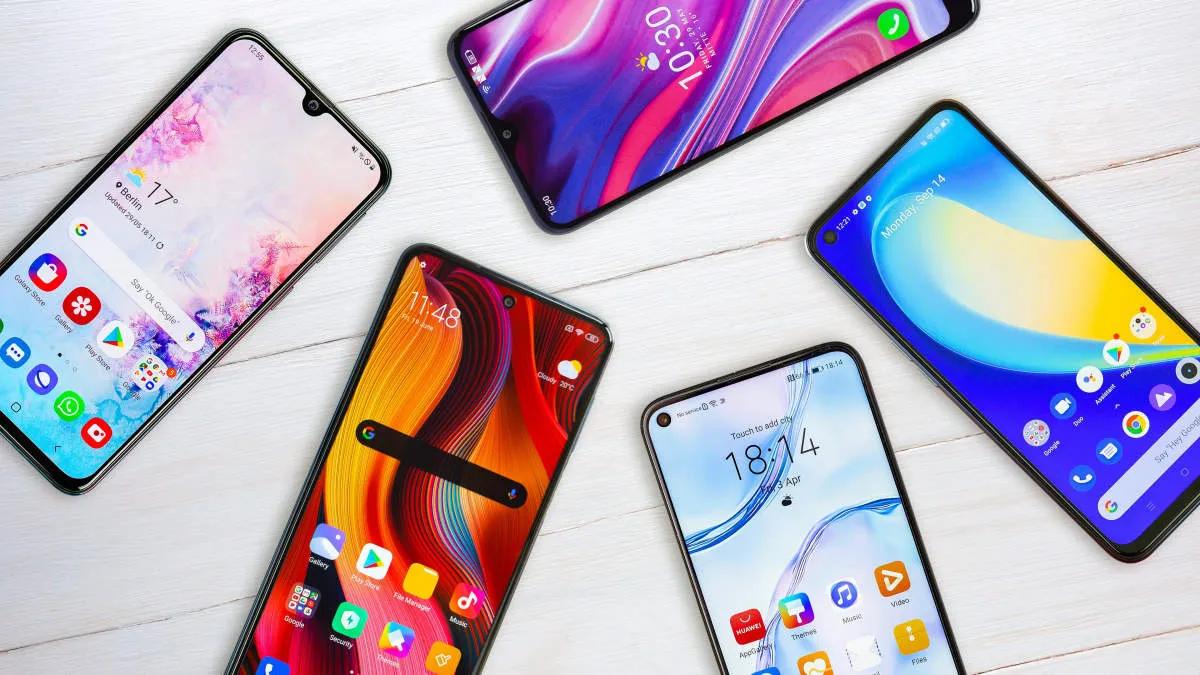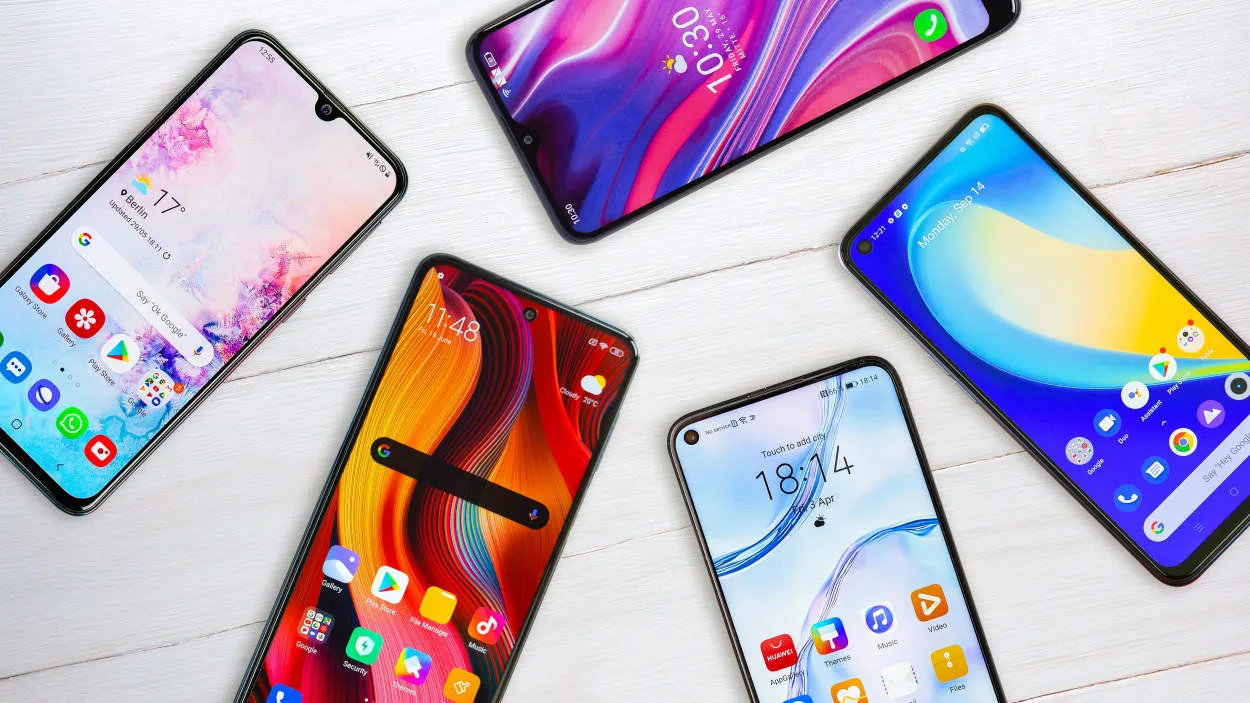Are you in the market for a new smartphone but don’t know where to start? Look no further! In this smartphone buying guide, we will highlight the features that truly matter. Whether you’re a tech enthusiast or simply looking for a reliable phone, this article will help you make an informed decision.
Prioritizing Essential Features

When it comes to buying a smartphone, it can be overwhelming to choose from the plethora of options available in the market. To make an informed decision, it is crucial to prioritize the essential features that matter the most to your specific needs. Here are some key features you should consider:
1. Operating System
The operating system (OS) is the backbone of your smartphone and determines its user experience. Android and iOS are the two dominant OS options, each offering unique features and functionalities. Consider your familiarity with the OS, app compatibility, and personal preferences when selecting the right one for you.
2. Display
The display is one of the most visually impactful features of a smartphone. Factors to consider include screen size, resolution, and type (LCD or OLED). A larger, high-resolution display can enhance your multimedia experience, but it may also affect the overall size and portability of the device.
3. Camera
For photography enthusiasts, the camera capabilities of a smartphone play a crucial role. Look for features such as megapixel count, aperture size, optical image stabilization, and additional camera sensors. However, keep in mind that higher megapixels don’t always guarantee better image quality.
4. Battery Life
A long-lasting battery is essential for uninterrupted smartphone usage throughout the day. Consider the battery capacity and efficiency, as well as the availability of fast charging options. Additionally, check user reviews and expert tests to get a realistic idea of the device’s actual battery performance.
5. Performance and Storage
The performance of a smartphone is determined by its processor, RAM, and internal storage. Consider the processing power required for your daily activities, such as multitasking or gaming. Additionally, evaluate the available storage space for apps, photos, videos, and other files.
6. Connectivity and Network
Ensure that the smartphone you choose is compatible with your preferred network carrier and supports the necessary connectivity options, such as 4G/LTE, Wi-Fi, Bluetooth, and NFC. Additionally, check if the device has expandable storage options or dual SIM support if required.
7. Design and Build Quality
The design and build quality of a smartphone can significantly impact its durability and ergonomics. Consider factors such as the materials used, water and dust resistance ratings, and overall aesthetics. Additionally, ergonomic design features, such as slim profiles and lightweight construction, can enhance user comfort.
By prioritizing these essential features according to your needs, you can narrow down your options and find the perfect smartphone that meets your requirements. Remember to thoroughly research and compare different models before making a final decision.
Understanding Processor Performance
When it comes to buying a smartphone, understanding processor performance is crucial. The processor is often referred to as the “brain” of a device and determines how smoothly and efficiently it can perform various tasks.
Processors are made up of multiple cores, which are responsible for executing instructions. The number of cores plays a significant role in the phone’s multitasking capabilities. Generally, smartphones come with either dual-core, quad-core, or octa-core processors.
Single-core processors are rare in modern smartphones as they are not efficient in handling multiple tasks simultaneously. Dual-core processors offer better performance than single-core processors, while quad-core processors provide even more power for running demanding applications and games.
Octa-core processors are the most advanced and offer the best performance. They consist of eight cores, divided into two groups. The first group handles lightweight tasks, while the second group tackles more intensive tasks, resulting in improved performance and power efficiency.
Another essential aspect of processor performance is clock speed, measured in GHz. It determines how quickly the processor can execute instructions. Higher clock speeds generally result in faster performance.
However, it’s important to note that processor performance alone doesn’t determine a smartphone’s overall performance. Factors like RAM, software optimization, and storage speed also contribute significantly.
Understanding processor performance is crucial for making an informed decision when purchasing a smartphone. It ensures that you choose one that can handle your desired tasks seamlessly, whether it be gaming, multitasking, or running resource-heavy applications.
Camera Quality Assessment
When buying a smartphone, one of the key factors to consider is the camera quality. As smartphone cameras have evolved over the years, they have become a crucial aspect for many users. Here are some important features to assess camera quality:
1. Megapixels
Megapixels determine the level of detail a camera can capture. Higher megapixel count generally results in sharper and more detailed photos. However, it’s important to note that megapixels alone do not guarantee better image quality.
2. Aperture
The aperture size determines how much light the camera lens can gather. A wider aperture (lower f-number) allows more light, resulting in better low-light performance and the ability to create a shallow depth-of-field effect.
3. Image Stabilization
Image stabilization technology helps reduce blurriness in photos caused by shaky hands or movement. Optical image stabilization (OIS) or electronic image stabilization (EIS) can greatly improve the sharpness of images, especially in low-light situations or when recording videos.
4. HDR (High Dynamic Range)
HDR allows for well-balanced exposure in high-contrast scenes by combining multiple exposures into a single image. This feature is particularly useful when capturing landscapes or scenes with bright and dark areas.
5. Camera Software and AI Enhancements
The camera software and artificial intelligence (AI) enhancements play a significant role in capturing great photos. Features like night mode, portrait mode, and scene recognition can enhance the overall image quality and provide more creative options.
When buying a smartphone, it’s important to consider your specific camera needs. If photography is a priority, look for smartphones that excel in these camera quality assessment areas.
Battery Life and Charging Speed
In today’s smartphone market, battery life and charging speed are essential factors to consider when purchasing a new device. With the increasing reliance on smartphones for various tasks, including heavy usage of apps, browsing, gaming, and media consumption, a longer battery life has become crucial.
Battery Life:
The battery life of a smartphone determines how long it can last on a single charge. It is measured in milliampere-hours (mAh). Higher mAh indicates a larger battery capacity, which generally results in a longer battery life. When choosing a smartphone, look for devices with bigger battery sizes to ensure they can keep up with your daily usage without requiring frequent recharging.
Charging Speed:
Charging speed refers to how fast a smartphone’s battery can be charged. It is measured in amperes (A) or watts (W). Quick charging technologies like Qualcomm’s Quick Charge or OnePlus’ Warp Charge allow devices to recharge at a faster rate, saving you valuable time. Additionally, some smartphones support wireless charging, which offers convenience by eliminating the need for cables.
Tips for Optimizing Battery Life:
- Dimming the screen brightness can significantly extend battery life.
- Restricting background app refresh and disabling unnecessary notifications can reduce battery drain.
- Enabling battery-saving modes or power optimization settings can help prolong usage.
When selecting a smartphone, don’t solely rely on manufacturers’ claims. It is advisable to check out reviews and user feedback regarding battery life and charging speed to ensure the device meets your expectations.
Smartphone Durability and Build
When it comes to purchasing a smartphone, one important factor to consider is its durability and build quality. After all, you want a device that can withstand daily use and last for a long time. Here are some key aspects to pay attention to when evaluating the durability of a smartphone.
1. Material
The choice of materials used in the construction of a smartphone plays a significant role in its durability. High-quality materials such as aluminum, stainless steel, or reinforced polycarbonate tend to offer better resistance against accidental drops and impacts compared to plastic or glass.
2. Water and Dust Resistance
Having a smartphone with water and dust resistance can be a major advantage. Look for an IP rating, which indicates the level of protection against these elements. A higher IP rating means better durability in challenging environments.
3. Gorilla Glass or Equivalent
The display is usually the most vulnerable part of a smartphone, making it crucial to have strong and scratch-resistant glass. Check if the device has a layer of Gorilla Glass or a similar toughened glass. This ensures greater protection against accidental scratches and drops.
4. Build Quality
Pay attention to the overall build quality of the smartphone. Look for devices that feel solid and well-constructed. Check for any potential weak points such as loose buttons, gaps, or creaky parts that may indicate a less durable build.
In conclusion, when buying a smartphone, it’s essential to consider its durability and build quality. The right combination of materials, water and dust resistance, durable glass, and solid construction can significantly enhance the lifespan and usability of your device.
Operating System Considerations
When it comes to purchasing a smartphone, one important aspect to consider is the operating system (OS) it runs on. The operating system plays a crucial role in determining the user experience, available features, and overall functionality of the device. Here are some key considerations to keep in mind:
1. iOS
iOS, developed by Apple, is known for its sleek and user-friendly interface. It offers a seamless integration with other Apple devices and provides access to the extensive App Store. Additionally, iOS often receives timely updates and is known for its strong security features.
2. Android
Android, developed by Google, is the most widely used operating system globally. It offers a high level of customizability and a vast selection of apps through the Google Play Store. Android supports various smartphone brands, providing users with a wide range of options to choose from.
3. Windows Mobile
Windows Mobile, powered by Microsoft, is another option to consider. It offers a unique and unified experience across devices, with integration with Windows PCs and tablets. However, the availability of apps on the Windows Store may be more limited compared to iOS and Android.
4. Others
There are also other operating systems such as BlackBerry OS and KaiOS, which cater to specific niche markets. While less popular, these operating systems may offer unique features tailored to certain user preferences.
Ultimately, the choice of operating system depends on your personal needs and preferences. Consider factors such as the availability of apps, ease of use, device compatibility, and security features. Remember to test out different operating systems before making a final decision. Happy smartphone shopping!
Conclusion
When it comes to buying a smartphone, considering the features that matter is crucial. Look for a phone with a reliable processor, ample storage space, a high-resolution display, a long-lasting battery, a good camera, and the latest software updates. Additionally, pay attention to the design, durability, and pricing. By taking these factors into account, you can make an informed decision and find the perfect smartphone to meet your needs.



